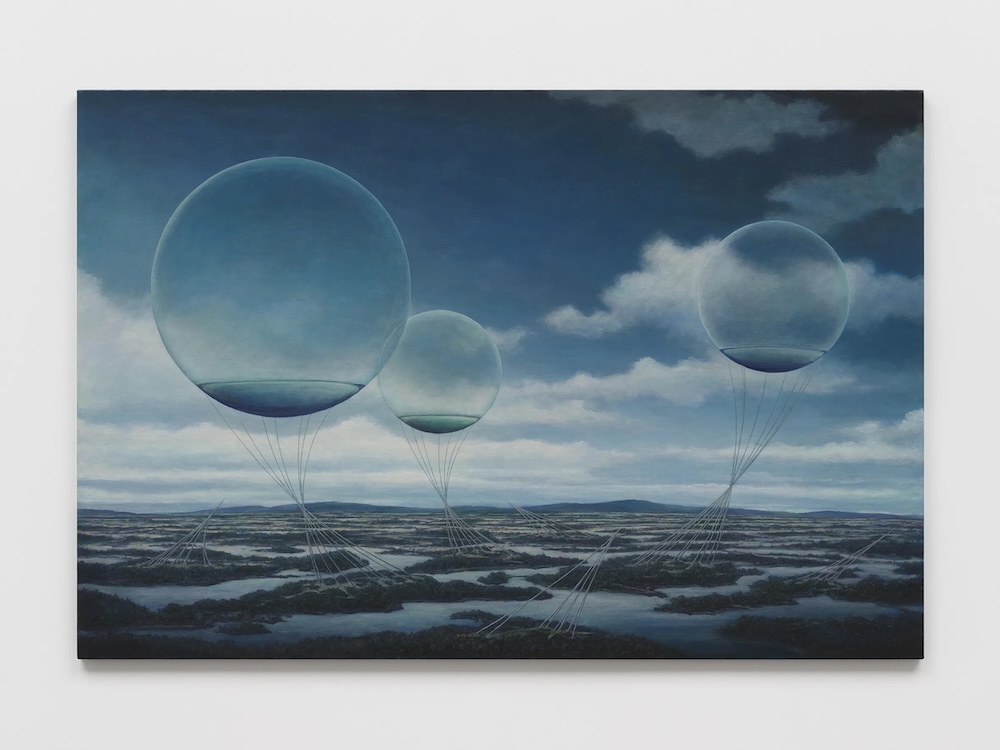Minoru Nomata: Continuum | White Cube
Minoru Nomata is a fantasist. He paints realistic-looking landscapes that feature impossible yet somehow functional-looking buildings and structures, supported by familiar-looking but equally fantastic technologies. They get more unreal the more you look at them.
Continuum-6, pictured below, is an example. Transparent orbs float above a watery landscape, connected to the ground by translucent cables. We can imagine they were made for some kind of agricultural purpose, irrigating the land. But what makes them float? And where are the makers? (Nomata’s landscapes are, invariably, unpeopled.) It must be a scene from another time, maybe even another planet, a sci-fi dream.
 ‘Continuum-6’ (2024)
‘Continuum-6’ (2024)
Nomata’s works are all meticulously rendered in acrylic paint, though he rejects that medium’s potential for bright clarity, and uses a generally dusty-looking and muted palette. He takes painful care over the details of his landscapes, picking out blades of grass and eddies in water. He continues his scenes over the sides of each canvas, all the way to where it’s tethered to the back of the frame: the clever curators at White Cube, hosts of this exhibition of Nomata’s new Continuum series, have shown off this feature by having all the works stand out slightly from the wall.
The artist explains his method, with typical precision, as “daydreaming in an awakened state of reality”. Exactly so. The viewer sees these landscapes as real, then steps back and appreciates their impossibility.
Nomata names Charles Sheeler as one of his influences. The American artist of the early 20th century was famous for his meticulously rendered factories and farms, though they were apparently drawn from life rather than fantasy. He was part of an evocatively named movement called Precisionism. It was great to find out there’s a similarly precise 21st century Japanese variant.
Minoru Nomata: Continuum is at White Cube (London). - 2024